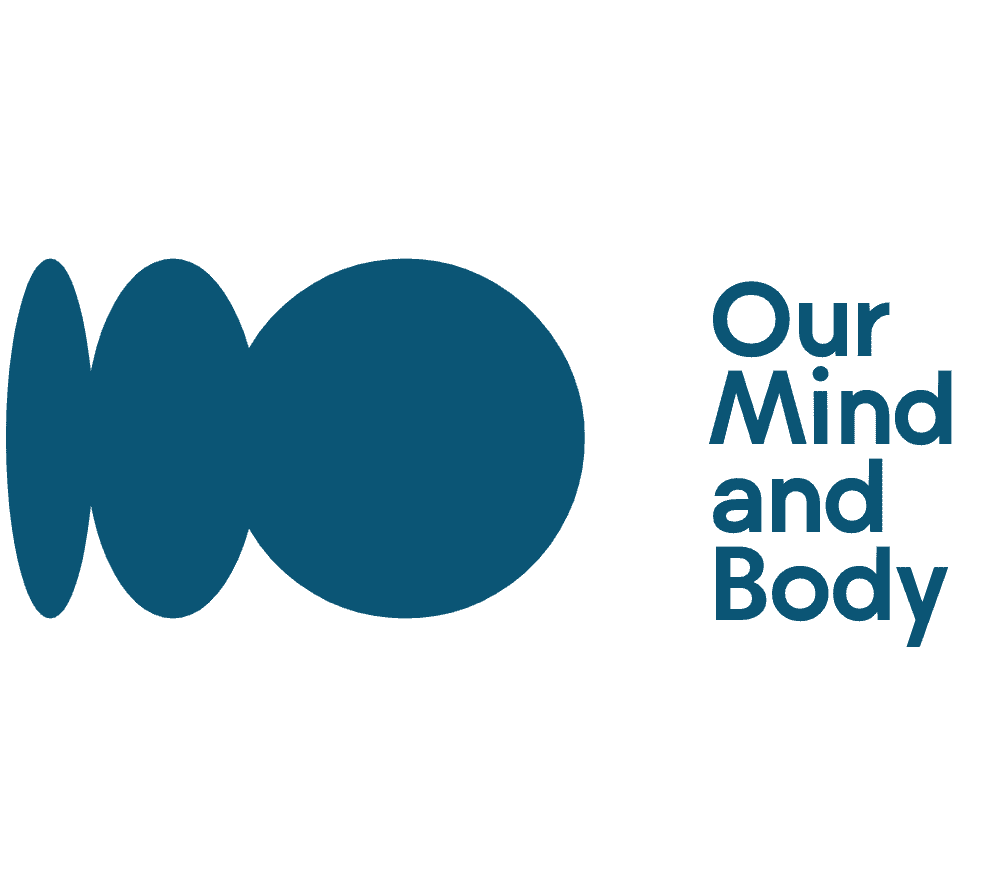Inspiration
Fearless – How This Power Word Can Make You Better

I firmly believe that every individual has the potential to be fearless. It’s just a matter of tapping into the inner strength we all have. Being fearless doesn’t mean being reckless or without any fear at all. Instead, it’s about acknowledging our fears and choosing to face them head on, carefully evaluating risks, and pushing past our comfort zones.
In this article, I want to explore how the concept of fearlessness can make us better in various aspects of life. Fearlessness is a powerful word that can inspire us to achieve great things beyond what we thought was possible. It’s about having the courage to pursue our dreams despite any obstacles or doubts that may arise along the way.
When we embrace fearlessness as a way of life, it can transform not only ourselves but also those around us by inspiring them to take their own leaps of faith and conquer their fears. So let’s dive into how we can cultivate fearlessness in our lives and become better versions of ourselves!
Key Takeaways
- Embracing fearlessness is crucial for personal growth and success.
- Overcoming one fear at a time leads to greater self-awareness and inner strength.
- Taking calculated risks is essential for personal and professional growth.
- Building resilience and mental toughness can help build confidence and overcome resistance to change.
Understanding the Concept of Fearlessness
You’re probably thinking, "Fearlessness? That sounds impossible!" But hear me out, because understanding the concept of fearlessness is key to unlocking your full potential.
Fearlessness isn’t about being completely immune to fear or never feeling anxious again; it’s about overcoming those fears and cultivating courage even in the face of adversity. It’s about recognizing your fears as a natural part of life and learning how to move past them.
Overcoming fear can be a daunting task, but it’s essential if you want to grow and achieve greatness. Fear can hold us back from pursuing our dreams and taking risks that could lead to success. When we cultivate courage, on the other hand, we begin to see opportunities where once we only saw obstacles. We become more confident in ourselves and our abilities, which allows us to take on challenges with greater ease.
Identifying your fears is an important step towards becoming fearless. Once you know what scares you most, you can begin working on ways to overcome those fears. Whether it’s public speaking, starting a new business venture, or asking someone out on a date, identifying your fears allows you to confront them head-on rather than avoiding them altogether.
So let’s take this first step together towards living a life free of fear!
Identifying Your Fears
Sometimes, we need to face our fears head-on in order to grow and overcome obstacles. It can be a daunting task, but identifying our fears is the first step towards overcoming them.
Self-reflection is key here – we must take a moment to think about what it is that scares us and why. Is it a fear of failure? A fear of the unknown? Once we understand our fears, we can begin to confront them.
Overcoming fears isn’t easy, but it’s necessary if we want to achieve success and personal growth. We often hold ourselves back because of our fears – they limit us and prevent us from reaching our full potential. However, when we face our fears head-on, we become more courageous and confident. We learn that we are capable of handling difficult situations and that there’s nothing stopping us from achieving our goals.
Self-reflection plays a crucial role in identifying and overcoming our fears. By taking the time to understand what scares us, we can begin to work through those feelings and take steps towards conquering them.
Overcoming one fear at a time will lead to greater self-awareness and inner strength, empowering us to take calculated risks in pursuit of our dreams without letting fear hold us back.
Taking Calculated Risks
Taking calculated risks is an essential part of personal and professional growth, as it allows us to step outside our comfort zones and reach new heights. However, the idea of taking risks can be daunting for some people due to fear of failure or negative outcomes. That’s why it’s important to practice risk management and make calculated decisions.
One way to manage risk is by creating a table with three columns: the potential risks, the likelihood of each risk occurring, and the potential consequences if that risk does occur. By analyzing these factors, we can weigh the pros and cons before making a decision. This not only helps us make informed choices but also builds confidence in our ability to handle any challenges that may arise.
Ultimately, taking calculated risks requires a balance between being cautious and being bold. It’s about understanding our own limits while also pushing ourselves beyond them. With practice, we can learn to embrace uncertainty and trust ourselves to make smart decisions that will lead us towards success. By doing so, we build confidence in our abilities and continue on the path towards personal growth.
Transitioning into the next section about building confidence, it’s important to remember that taking calculated risks is just one aspect of developing self-assurance. Confidence comes from within and requires ongoing effort to nurture. So let’s explore some ways we can continue building this powerful trait in ourselves.
Building Confidence
Developing a strong sense of self-assurance involves nurturing your inner belief in yourself and consistently practicing behaviors that reinforce this confidence. One way to build confidence is by exploring vulnerability. This means being honest with yourself about your weaknesses and using them as opportunities for growth instead of sources of shame or insecurity.
Another important aspect of building confidence is building resilience. Resilience is the ability to bounce back from setbacks and failures, and it’s an essential trait for anyone looking to achieve success. One way to build resilience is by taking on challenges and obstacles that push you out of your comfort zone. When you face these challenges head-on, you’re building mental toughness and developing a stronger sense of self.
Building confidence isn’t something that happens overnight, but it’s worth the effort. By exploring vulnerability and building resilience, you’ll be better equipped to face adversity when it comes your way.
In the next section, we’ll explore how embracing fearlessness can help you overcome even the toughest challenges life throws at you.
Facing Adversity
When life throws you curveballs, facing adversity head-on can be the key to overcoming obstacles and developing mental fortitude. It’s important to remember that setbacks and challenges are a natural part of life, but it’s how we respond to them that defines us. Instead of letting fear or doubt consume you when faced with adversity, embrace the challenge and use it as an opportunity for growth.
One way to approach adversity is by focusing on the things within your control. A helpful tool in doing this is creating a table with two columns: one for what you can control and one for what you cannot control. By focusing on what you can control, such as your attitude and effort, you’ll be able to maintain a positive mindset and take action towards overcoming obstacles. Additionally, developing mental toughness through practices like meditation or visualization can help build resilience in the face of adversity.
Overcoming adversity isn’t easy, but it’s possible with persistence and determination. By embracing challenges as opportunities for growth and focusing on what is within our control, we can develop mental fortitude that will serve us well in all aspects of life. The next step towards personal growth is learning to embrace change – recognizing that change is inevitable and necessary for progress.
Embracing Change
I’ve learned that embracing change is essential in life. It’s not easy, but it’s necessary to grow and improve.
The benefits of change are immense, from personal growth to professional development.
The Benefits of Change
Embracing change is like jumping into a refreshing pool on a hot summer day – it may be uncomfortable at first, but it ultimately revitalizes and rejuvenates. The power of growth lies in our ability to adapt to new situations and challenges.
When we approach change with an open mindset, we allow ourselves the opportunity to learn, grow, and become better versions of ourselves. The benefits of change are numerous. By embracing it, we expose ourselves to new experiences that broaden our perspectives and help us develop new skills.
We also become more resilient and adaptable when faced with future changes. Ultimately, by embracing change, we empower ourselves to take control of our lives instead of being held back by fear or uncertainty. With this newfound strength, we can overcome resistance to change and continue growing as individuals.
Overcoming Resistance to Change
Change can be scary and overwhelming. It’s natural to resist it, especially if we feel comfortable with the way things are. However, resistance to change can hold us back from experiencing growth and achieving our goals. Overcoming this resistance is crucial if we want to embrace growth and become better versions of ourselves.
To overcome resistance to change, we need to take proactive steps towards embracing it. Here are four strategies that have helped me in my journey towards personal growth:
-
Acknowledge your fears: When we resist change, it’s often because we’re afraid of the unknown or losing something valuable. By acknowledging these fears, we can begin to address them and move past them.
-
Focus on the positive outcomes: Change may bring some discomfort or uncertainty at first, but it also presents opportunities for learning and growth. By focusing on these positive outcomes, we can reframe our perspective on change.
-
Take small steps: Big changes can feel daunting, but taking small steps towards our goals can make the process more manageable and less overwhelming.
-
Surround yourself with support: Having a support system in place can make all the difference when facing challenges or setbacks during times of change.
By using these strategies, I’ve been able to overcome my fear of change and embrace new opportunities for growth in both my personal and professional life. Now let’s explore how finding opportunities in change can lead to greater success without missing a beat!
Finding Opportunities in Change
Finding opportunities in change can be challenging, but it’s important to remember that growth and success often come from stepping outside of our comfort zones. Adapting to uncertainty requires a mindset shift, where we see change as an opportunity for growth rather than something to fear.
It’s about finding silver linings and focusing on the positive aspects of the situation. One way to approach this is by embracing the unknown and being open to new experiences. This can mean trying out new hobbies or taking on different roles at work.
It’s also important to stay curious and keep learning, even when things are uncertain. By doing so, we become more adaptable and better equipped to handle whatever comes our way. Ultimately, finding opportunities in change allows us to grow as individuals and reach our highest potential.
As we embrace change and find opportunities for growth, we can start pursuing our goals with confidence and determination. Instead of letting fear hold us back, we can use it as fuel to propel ourselves forward towards success.
Pursuing Your Goals
As I’m pursuing my goals with fearless determination, I believe I’m capable of achieving anything I set my mind to.
Overcoming obstacles and staying motivated can be challenging at times, but with a positive mindset and unwavering determination, there’s nothing that can’t be accomplished. It’s important to remember that every setback is an opportunity to learn and grow stronger.
When pursuing your goals fearlessly, it’s vital to maintain focus on the end goal while remaining flexible in your approach. There may be times when unexpected challenges arise or plans need to be adjusted, but this shouldn’t deter you from persevering towards your desired outcome. The key is to have faith in yourself and trust the process.
In conclusion, as we pursue our goals with fearless determination, we’ll undoubtedly encounter obstacles along the way. However, by remaining focused on our end goal and maintaining a positive attitude, we can overcome any challenge that comes our way.
With each victory achieved through perseverance and hard work, we become more confident in ourselves and our abilities – setting us up for even greater success down the road.
As we move forward into the next section about communicating with confidence, let’s remember that this fearlessness should extend beyond just our personal pursuits – it should also empower us to communicate confidently and effectively in all aspects of life.
Communicating with Confidence
With practice and a positive attitude, you’ll be able to express yourself confidently in any situation. Assertive communication involves effectively conveying your thoughts, feelings, and needs while respecting those of others. It takes courage to speak up for ourselves in a clear and respectful manner, but doing so can help us build stronger relationships and achieve our goals.
Body language also plays an important role in communicating with confidence. Standing tall with shoulders back and making eye contact conveys authority and self-assurance. On the other hand, slouching or avoiding eye contact can make us appear uncertain or uninterested. By consciously practicing confident body language, we can project an image of strength and conviction.
Remember that building confidence in communication takes time and effort. Start small by speaking up in low-stress situations or practicing assertive responses to common scenarios. With each successful interaction, you’ll gain more confidence to tackle bigger challenges. By striving to communicate with assertiveness and using confident body language, we can inspire others to do the same and create a culture of positivity and empowerment.
Inspiring Others
I’m excited to continue exploring how we can communicate with greater confidence and inspire those around us. One of the most powerful ways to do this is by embracing inspiring leadership.
When we lead by example, others are naturally drawn to our energy and enthusiasm. By staying positive, focused, and determined, we show others what’s possible and help them tap into their own courage.
Motivational speaking is another key way to inspire those around us. Whether it’s in a formal presentation or a casual conversation, sharing our passion and belief in ourselves can be incredibly inspiring for others. We have the power to lift people up and encourage them to take on challenges they may not have thought possible before.
When we speak from a place of fearlessness, anything becomes possible. We can move mountains, overcome obstacles, and inspire those around us to do the same.
So let’s embrace this power word with open hearts and minds as we move forward into the next section about embracing fearlessness as a way of life.
Conclusion: Embracing Fearlessness as a Way of Life
You can choose to live a life free from fear by embracing the power of fearlessness. Benefits of fearlessness are numerous and life-changing.
By adopting a fearless mindset, you become more decisive, creative, and confident in your abilities. Developing a fearless mindset involves recognizing that fear is just an emotion that we have control over. It means taking calculated risks, even if it means stepping outside of our comfort zones. Fearlessness also requires us to trust ourselves and our instincts.
When we embrace this way of life, we unlock our full potential and realize that failure is not something to be feared but embraced as an opportunity for growth. Living fearlessly is not always easy, but it’s worth the effort.
The benefits extend beyond personal growth; they inspire others to do the same. So go ahead and take that leap of faith, pursue your dreams with passion and conviction because when you choose to live boldly without fear holding you back, anything becomes possible.
Frequently Asked Questions
Can fearlessness be learned or is it an inherent trait?
At first, I used to think that fearlessness was an inherent trait. I believed that some people were just born with it, while others weren’t.
However, after years of experience and personal development, I’ve come to realize that fearlessness is actually a learned skill. Sure, some people may have a predisposition towards being more bold or daring, but ultimately it’s up to each individual to cultivate their own sense of courage.
Nature versus nurture certainly plays a role in shaping our personalities and behaviors, but at the end of the day we all have the power to choose how we respond to challenges and obstacles in life. It takes practice and determination, but anyone can develop a fearless mindset if they’re willing to put in the work.
Don’t let your fears hold you back – embrace them as opportunities for growth and learn how to become truly fearless!
How can I overcome the fear of failure?
To overcome the fear of failure, I had to make a mindset shift and start embracing uncertainty. Instead of seeing failure as a negative outcome, I began to view it as an opportunity for growth and learning.
I stopped focusing on the potential consequences of failing and instead focused on the potential benefits of trying. By accepting that failure is a natural part of any journey towards success, I was able to approach challenges with more confidence and determination.
Embracing uncertainty also allowed me to be more adaptable and open-minded when faced with unexpected situations or setbacks. With this new perspective, I’m no longer held back by fear but rather empowered by it.
What are some practical tips for taking calculated risks?
Taking calculated risks can be daunting, but it’s essential for growth and success. Successful entrepreneurs take an average of six years to start seeing significant profits.
Risk assessment is critical to ensure that potential rewards outweigh potential losses. Embracing uncertainty is vital as you navigate through unchartered waters. Having a clear plan in place will help mitigate any potential risks.
Breaking down risks into smaller steps makes them more manageable, allowing you to focus on each step at a time while keeping your eye on the bigger picture.
Remember, taking calculated risks is not about being reckless. It’s about stepping out of your comfort zone and embracing new opportunities with confidence.
How can I boost my self-confidence?
Boosting self-confidence is all about changing your thought patterns and beliefs. One of the best ways to do this is through positive affirmations. These are simple statements that you repeat to yourself every day, such as "I’m worthy," "I’m capable," or "I’m enough."
Over time, these affirmations will start to sink in and you’ll begin to believe them. Another technique is visualization – imagining yourself achieving your goals and feeling confident can help make it a reality.
It’s important to remember that building self-confidence takes time and effort, but by consistently practicing positive affirmations and visualization techniques, you can become more confident in yourself and your abilities.
What are some effective ways to inspire others to be fearless?
I believe the best way to inspire others to be fearless is by leading by example and creating a supportive environment. When we’re brave ourselves, it inspires those around us to be courageous too.
It’s important to show vulnerability and acknowledge our fears, but then push past them and take risks. When we do this, we set the tone for others to follow suit.
Additionally, creating a supportive environment where people feel safe to take risks and make mistakes can also foster fearlessness. Encouraging open communication, providing constructive feedback, and celebrating successes (big or small) can all contribute to cultivating a culture of bravery.
Ultimately, when we inspire others to be fearless, we create a community of empowered individuals who are capable of achieving great things.
Conclusion
As I reflect on the power of fearlessness, I’m reminded of a bird soaring high in the sky. With its wings spread wide, it glides effortlessly through the air, unafraid of what lies ahead.
This bird represents the beauty and strength that comes with embracing fearlessness as a way of life. When we identify our fears and take calculated risks, we can build confidence and face adversity head-on.
By pursuing our goals with determination and communicating with confidence, we not only inspire ourselves but also those around us. And just like the bird soaring in the sky, we too can inspire others to embrace their own fearlessness.
So let us all spread our wings and soar towards our dreams without hesitation or doubt. Let us be fearless in pursuit of our passions and never shy away from taking risks. For when we live fearlessly, we unlock endless possibilities for growth and success in every aspect of our lives.
Meet Kiran, the guiding light of wisdom behind the empowering content at OurMindAndBody.com. As a talented and compassionate writer, Kiran weaves words with grace and insight, sharing profound knowledge and practical advice to inspire positive transformations in the lives of readers.
With a background in psychology and a deep-rooted passion for well-being, Kiran brings a unique blend of expertise and empathy to her writing. Her journey into the realm of mindfulness, meditation, and yoga began as a personal quest for self-discovery and healing. Having experienced the profound benefits of these practices firsthand, Kiran is committed to empowering others to embark on their own journeys of self-exploration and growth.
Inspiration
Unveiling The Depths Of Spiritual Warfare

Spiritual warfare is a complex battle with various challenges and strategies at different levels. Essentially, this battle is against evil forces led by Satan, whose aim is to shake our faith and hinder our relationship with God.
In this article, we will delve into the depths of spiritual warfare, exploring the various levels of attack, strategies to overcome the devil, and effective ways to fight against spiritual attacks.
By understanding the nature of this battle and equipping ourselves with the right tools, we can navigate this spiritual warfare and align ourselves with God’s will.
Key Takeaways
- Spiritual warfare involves battling against Satan’s forces and can consume individuals who are not properly aligned with God’s purposes.
- There are three levels of spiritual warfare: flesh, devil, and worldly powers, with the highest level being level 3.
- The devil seeks to deceive, tempt, and destroy, but believers can overcome him through prayer, fasting, scripture reading, and maintaining a personal relationship with God.
- Effective strategies to combat the devil and engage in spiritual warfare include establishing a relationship with God through communication and obedience, engaging in activities that please God, and surrounding oneself with positive influences such as uplifting music and spiritual fellowship.
Levels of Spiritual Warfare
I think it’s important to understand the levels of spiritual warfare in order to effectively combat these battles. By recognizing spiritual attacks, we can better equip ourselves to fight back.
The levels of spiritual warfare include the flesh, devil, and worldly powers. The flesh level involves tangible battles that we face in our physical bodies and circumstances. The devil level focuses on the external enemy, Satan, who seeks to deceive and destroy. Lastly, the worldly powers level encompasses attacks on our faith and belief systems by societal influences.
Spiritual armor plays a crucial role in defending against these attacks. To combat these battles, we must arm ourselves with prayer, faith, and the word of God.
By staying vigilant and aware of the different levels of spiritual warfare, we can effectively overcome and align ourselves with God’s will.
Strategies Against the Devil
Establishing a personal relationship with God through communication and obedience can be a powerful strategy to overcome the devil’s temptations and deceptions.
In the midst of spiritual warfare, it is crucial to equip ourselves with spiritual armor to withstand the attacks of the devil.
Prayer, in particular, is a potent weapon that allows us to communicate with God and seek His guidance and strength.
Through prayer, we can overcome the devil’s attempts to deceive and tempt us, as we draw closer to God and align ourselves with His will.
Prayer not only strengthens our relationship with God but also empowers us to resist the devil’s influence.
By regularly engaging in open and honest communication with God, we can equip ourselves with the spiritual armor necessary to overcome the devil’s attacks and stand firm in our faith.
Overcoming Spiritual Attacks
To overcome spiritual attacks, it is important to recognize the signs and seek guidance and strength from God.
Spiritual warfare can manifest in various ways, including behavior changes and unexplained physical symptoms. By being aware of these signs, we can identify when we are under attack and take appropriate action.
Defending against spiritual attacks involves establishing a strong relationship with God through prayer, fasting, and studying the Bible. These practices help us to stay connected to God’s power and truth, enabling us to resist the enemy’s influence.
Additionally, surrounding ourselves with positive influences such as uplifting music and spiritual fellowship can provide protection and support.
It is crucial to remember that spiritual attacks are not limited to believers; non-believers can also be targeted. By recognizing spiritual warfare and actively defending against it, we can overcome evil and align ourselves with God’s will.
Frequently Asked Questions
How can I differentiate between a spiritual attack and a normal life struggle?
Understanding spiritual discernment is crucial in differentiating between a spiritual attack and a normal life struggle. Recognizing signs of spiritual attacks, such as sudden behavior changes or unexplained physical symptoms, can help discern the source of the struggle.
Can spiritual warfare affect my physical health?
Yes, spiritual warfare can have a mental and emotional impact which can in turn affect physical health. However, through engaging in spiritual warfare, healing can occur on all levels, including physical well-being.
Is it possible to unknowingly invite spiritual attacks into my life?
Yes, it is possible to unknowingly invite spiritual attacks into my life. Recognizing spiritual attacks involves being aware of signs such as behavior changes and unexplained physical symptoms. It is important to protect oneself through prayer and positive influences.
Are there specific prayers or rituals that can protect me from spiritual attacks?
Prayer techniques and spiritual cleansing practices can provide protection from spiritual attacks. By seeking God’s guidance, regularly praying, and engaging in rituals such as smudging or anointing, I can create a spiritual shield against negative forces.
Can spiritual warfare affect my relationships with other people?
Spiritual warfare can impact my relationships by affecting my emotional well-being. Forgiveness plays a crucial role, as it allows for healing and restoration. It is important to address the spiritual battles within ourselves to maintain healthy connections with others.
Conclusion
In conclusion, spiritual warfare is a complex battle that occurs on multiple levels. It involves attacks on faith and belief systems, with the ultimate goal of undermining humanity’s relationship with God. This battle includes the flesh, the devil, and worldly powers.
However, individuals can overcome the devil’s tactics by establishing a personal relationship with God and engaging in spiritual practices. These practices include prayer, fasting, and studying the Bible.
Some may argue that spiritual warfare is subjective and lacks tangible evidence. However, it is important to remember that the battle against evil is not always visible. Its effects can be felt through behavior changes and unexplained physical symptoms.
To effectively fight against spiritual attacks, individuals must actively seek God’s guidance and surround themselves with positive influences. By doing so, they can align themselves with God’s will and overcome the challenges of spiritual warfare.
Meet Kalinda, the passionate and visionary Editor-in-Chief of OurMindAndBody.com. Kalinda is a beacon of light in the realm of holistic well-being, and her mission is to positively impact the lives of others by inspiring them to embrace a healthier and more fulfilling lifestyle.
With a deep-rooted love for meditation, yoga, and spirituality, Kalinda’s journey toward self-discovery and personal growth started at a young age. She found solace and strength in these practices, which not only helped her cope with the challenges of life but also provided her with a profound sense of purpose. Eager to share the transformative power of these ancient disciplines, Kalinda embarked on a path to spread awareness and understanding.
Inspiration
The Mighty Gamabunta: Jiraiya’s Spiritual Beast

In the Naruto series, Gamabunta is known as Jiraiya’s legendary mystical creature and spiritual companion, showing impressive strength. With his ability to change shape, summon smaller toads, and utilize natural energy, Gamabunta proves to be a valuable ally to Jiraiya.
Together, they form an unstoppable team, communicating telepathically and coordinating their attacks in battle.
In this article, we will delve into the description, abilities, various names, and the first appearance of the mighty Gamabunta, shedding light on his significance in the Naruto universe.
Key Takeaways
- Gamabunta is Jiraiya’s mystical animal companion, a giant toad from Mount Myoboku.
- Gamabunta provides strategic support in combat, including transportation and close-range combat.
- Gamabunta has unique abilities such as shape-shifting, summoning smaller toads, and absorbing natural energy.
- The most commonly accepted name for Jiraiya’s spiritual beast is Gamabunta.
Description and Abilities
Gamabunta, Jiraiya’s spiritual beast, is a giant toad with incredible abilities. These abilities include shape-shifting, summoning smaller toads, and absorbing natural energy. Gamabunta plays a crucial role in Jiraiya’s training and development as a shinobi.
With Gamabunta’s strategic support and formidable combat skills, Jiraiya is able to enhance his combat capabilities and transportation. The strong bond between Jiraiya and Gamabunta is evident in their telepathic communication, which increases coordination and effectiveness in battle.
Furthermore, Gamabunta’s significance extends beyond Jiraiya to Naruto. As a summoning animal for both Jiraiya and Naruto, Gamabunta has a profound impact on their growth as shinobi. Through their encounters and battles together, Gamabunta provides guidance and support to Naruto, helping him develop his skills and overcome challenges.
This relationship between Naruto and Gamabunta showcases the importance of mentorship and the influence of spiritual beasts in the Naruto universe.
Various Names
Toad Boss, also known as the Great Toad Sage, is a prominent character in the Naruto series and serves as my loyal companion throughout my journeys.
Gamabunta holds great cultural significance in Japanese folklore, as it is based on the mythical creature known as the toad.
In the Naruto universe, Gamabunta plays a crucial role in shaping my character development. As a summoning animal, Gamabunta’s immense power and wisdom have guided me through countless battles and taught me important life lessons.
Our telepathic communication enhances our coordination, allowing us to strategize effectively in combat.
Gamabunta’s presence also showcases my growth and maturity as a ninja, as I gain the respect and trust of such a formidable and revered beast.
Together, we have faced many challenges, and our bond continues to strengthen as we overcome obstacles and protect the ninja world.
Summoning and First Appearance
Summoning my loyal companion was a pivotal moment in my battle against Orochimaru. An incredible force emerged to aid me – the Summoning Technique, a jutsu I had mastered. It allowed me to summon Gamabunta, the mighty toad, to the battlefield.
As he appeared in a swirl of smoke, Gamabunta’s massive size and power commanded attention. His first appearance showcased his formidable abilities. He unleashed a devastating Giant Toad Body Slam, crushing our enemies with his sheer strength.
With Gamabunta by my side, I felt invincible. His impressive water-style jutsu and unrivaled combat skills were at my disposal. The significance of Gamabunta’s first appearance in Naruto cannot be understated. It marked the beginning of a partnership that would prove crucial in numerous battles to come.
Frequently Asked Questions
How did Jiraiya first form a bond with Gamabunta?
Jiraiya formed a bond with Gamabunta through the Summoning Technique, where he summoned the giant toad to aid him in battle. Their bond is significant as Gamabunta provides strategic support and can understand human language, allowing for better coordination with other summoning animals.
Can Gamabunta communicate with other animals besides Jiraiya?
No, Gamabunta cannot communicate with other animals besides Jiraiya. His ability to communicate only extends to telepathic communication with Jiraiya, which enhances their coordination in battle but does not involve other animals.
What is the origin of Gamabunta’s name?
The name Gamabunta holds significant meaning in Japanese folklore. It symbolizes the connection between Jiraiya’s ninja techniques and the wisdom of the toad sage. Gamabunta also acts as a mentor and protector for Jiraiya, guiding him in his early days as a ninja.
Are there any other summoning animals that Jiraiya can call upon besides Gamabunta and Gamakichi?
No, there are no other summoning animals that Jiraiya can call upon besides Gamabunta and Gamakichi. Jiraiya’s summoning technique is unique and powerful, placing him among the top summoners in the Naruto series.
Has Gamabunta ever been defeated in battle?
In the world of Naruto, Gamabunta is a force to be reckoned with. Compared to other summoning animals, he is incredibly powerful. However, he does have his weaknesses. While he can defeat many spiritual beasts in battle, he is primarily limited to fighting alongside Jiraiya.
Conclusion
In conclusion, Gamabunta is a formidable and powerful ally to Jiraiya in the Naruto series. With his shape-shifting abilities, summoning smaller toads, and absorbing natural energy, Gamabunta proves to be a formidable force in combat.
His telepathic communication with Jiraiya enhances their coordination and makes them a nearly invincible duo. Known by various names such as Toad Boss and Great Toad Sage, Gamabunta is considered one of the strongest summoning animals in the Naruto universe.
An interesting statistic to note is that Gamabunta made his first appearance during the battle against Orochimaru using the Summoning Technique, showcasing his significance in Jiraiya’s journey.
Meet Kalinda, the passionate and visionary Editor-in-Chief of OurMindAndBody.com. Kalinda is a beacon of light in the realm of holistic well-being, and her mission is to positively impact the lives of others by inspiring them to embrace a healthier and more fulfilling lifestyle.
With a deep-rooted love for meditation, yoga, and spirituality, Kalinda’s journey toward self-discovery and personal growth started at a young age. She found solace and strength in these practices, which not only helped her cope with the challenges of life but also provided her with a profound sense of purpose. Eager to share the transformative power of these ancient disciplines, Kalinda embarked on a path to spread awareness and understanding.
Inspiration
Unveiling Pastor Jerry Eze’s Spiritual Father: A Catalyst For Growth

In the realm of spiritual growth and progress, the revelation of Pastor Jerry Eze’s mentor marks a pivotal moment in his journey.
This divine connection with Pastor Enoch Adeboye, a respected and revered figure, has become a cornerstone of Pastor Eze’s development.
Their relationship is a testament to the power of seeking guidance, honor, and mentorship in ministry.
As we delve into their profound bond, we will witness the transformative impact that a spiritual father can have on one’s ministry, vision, and spiritual walk.
Key Takeaways
- Pastor Jerry Eze’s spiritual father has had a cordial and healthy relationship with him, providing mutual respect and guidance that has influenced Pastor Jerry Eze’s ministry.
- Seeking guidance and mentorship in ministry is essential, as demonstrated by Pastor Jerry Eze’s own example, and can have a positive impact on one’s spiritual journey and ministry.
- Pastor Jerry Eze has multiple spiritual mentors in addition to his primary spiritual father, which is a common practice among ministers, and these mentors provide different perspectives and insights that enrich his spiritual journey.
- Pastor Jerry Eze’s spiritual father has had a significant positive impact on his ministry, influencing his mission to spread the gospel, shaping his ministry vision, providing guidance in ministry strategies, and supporting him in facing challenges.
Who is Pastor Jerry Eze’s Spiritual Father?
My spiritual father, Pastor Jerry Eze, has been greatly influenced and guided by Pastor Enoch Adeboye. This has resulted in a strong and healthy relationship filled with mutual respect and guidance.
Pastor Adeboye, as a spiritual father, holds significant importance in Pastor Jerry Eze’s life and ministry. He serves as a source of spiritual covering, offering guidance and direction in ministry decisions.
Through their relationship, Pastor Jerry Eze finds support and encouragement during times of challenges. Pastor Adeboye acts as a catalyst for growth and fruitfulness.
This bond of mentorship provides a solid foundation for Pastor Jerry Eze’s spiritual journey. It empowers him to walk confidently in his calling.
The significance of having a spiritual father like Pastor Adeboye cannot be understated. He is a role model and example, offering wisdom and experience that shape and strengthen Pastor Jerry Eze’s ministry.
Importance of Seeking Guidance
Seeking guidance from experienced leaders is crucial in ministry because mentorship and guidance play a vital role. As ministers, we can benefit greatly from the wisdom and guidance of those who have walked the path before us. These experienced leaders have valuable insights to share, having gone through similar experiences. They can nurture our spiritual growth through their relationships with us.
By seeking guidance, we open ourselves up to the wisdom and experience of others. We can learn from their successes and failures, gaining new perspectives that can shape our ministry. Mentorship provides us with accountability and direction, empowering us to sharpen our skills and talents. This helps us build strong foundations for effective service.
It’s important to understand that seeking guidance is not a sign of weakness. Instead, it shows humility and a desire to grow. So, let’s embrace the opportunities to learn from experienced leaders and nurture our spiritual growth through meaningful relationships.
Impact on Pastor Jerry Eze’s Ministry
Through my relationship with my spiritual father, Pastor Enoch Adeboye, I have been guided and supported in shaping my ministry vision and strategies. His influence on my mission to spread the gospel has been profound. His wisdom and guidance have strengthened my faith and commitment to serving God’s people.
Having Pastor Adeboye as a spiritual father has provided me with a solid foundation and a source of encouragement in the face of challenges. His support has been unwavering, and his guidance has been instrumental in helping me navigate the complexities of ministry.
I am forever grateful for his mentorship and the impact he has had on my life and ministry. His influence has not only shaped my mission but also deepened my relationship with God. Through his guidance, my faith has grown stronger, and I am more equipped to fulfill the calling that God has placed on my life.
Lessons from their Relationship
I have learned valuable lessons from my relationship with Pastor Enoch Adeboye. One important lesson is the importance of seeking guidance from experienced leaders and embracing mentorship opportunities. Through our connection, I have discovered that growth in ministry is greatly accelerated when we humble ourselves and learn from the wisdom of others.
My spiritual father has taught me the significance of respecting and honoring those who have gone before us, paving the way for our own journey. He has shown me the power of accountability and the nurturing of spiritual gifts and talents. Through his guidance, I have gained a deeper understanding of my purpose and the mission I have been called to fulfill.
The lessons I have learned through this relationship have not only shaped my ministry, but have also transformed my life. Growth through mentorship is a beautiful and essential aspect of every minister’s journey, and I am grateful for the impartation of wisdom and experience that I have received.
Role of Spiritual Fathers in Ministry
Having a mentor in ministry is like having a guiding light that illuminates the path and empowers us to fulfill our purpose.
Spiritual fathers play a crucial role in nurturing leaders and imparting wisdom and experience. They provide guidance and direction, shaping the ministry vision and mission. They impart valuable insights and perspectives that accelerate spiritual growth and sharpen skills and talents.
Spiritual fathers support and encourage ministers, strengthening their spiritual foundations and empowering them for effective service. They offer accountability and guidance, nurturing spiritual gifts and talents. They provide protection and covering, and their wisdom and experience become accessible resources for ministers.
The presence of a spiritual father is a catalyst for growth, helping us navigate through challenges and inspiring us to walk in faith and fruitfulness.
Frequently Asked Questions
How did Pastor Jerry Eze establish a relationship with his spiritual father?
Establishing a connection with my spiritual father was a divine appointment. Through seeking guidance from experienced leaders and embracing mentorship, I nurtured the mentorship, learning from his wisdom and experiencing spiritual growth.
What specific guidance and mentorship has Pastor Jerry Eze received from his spiritual father?
Oh, let me tell you about the guidance and mentorship I’ve received from my spiritual father. His wisdom and experience have truly been a catalyst for my growth. He has transformed my ministry and shaped my vision.
How has Pastor Jerry Eze’s spiritual father influenced his ministry strategies and mission?
Pastor Jerry Eze’s spiritual father has been a catalyst for growth in my ministry. His influence on my ministry strategies and mission has been invaluable, guiding me in spreading the gospel, shaping my vision, and strengthening my faith and commitment.
Are there any challenges that Pastor Jerry Eze has faced in his ministry that his spiritual father has helped him overcome?
In my ministry, challenges have come my way, but my spiritual father’s mentorship has been a guiding light. Like a lighthouse in stormy waters, he has helped me navigate through difficulties and emerge stronger than before.
Can you provide any specific examples of how Pastor Jerry Eze’s spiritual father has shaped his spiritual growth and development?
Pastor Jerry Eze’s spiritual father has had a transformational impact on his spiritual growth and development. Through their guidance and mentorship, he has gained spiritual insights that have shaped his ministry and mission.
Conclusion
In my journey as a minister, I have discovered the immense value of having a spiritual father. Pastor Enoch Adeboye has been that guiding light for me, a catalyst for growth in my ministry.
Through his wisdom, guidance, and support, I have been able to navigate challenges, sharpen my skills, and stay focused on my mission to spread the gospel.
As the adage goes, ‘A wise man learns from his mistakes, but a wiser man learns from the mistakes of others.’ The role of a spiritual father is to impart wisdom and help us avoid unnecessary mistakes.
Their presence in our lives brings accountability, protection, and a deepening of our spiritual walk. Let us all seek out mentors and spiritual fathers who can help us grow and flourish in our faith.
Meet Kalinda, the passionate and visionary Editor-in-Chief of OurMindAndBody.com. Kalinda is a beacon of light in the realm of holistic well-being, and her mission is to positively impact the lives of others by inspiring them to embrace a healthier and more fulfilling lifestyle.
With a deep-rooted love for meditation, yoga, and spirituality, Kalinda’s journey toward self-discovery and personal growth started at a young age. She found solace and strength in these practices, which not only helped her cope with the challenges of life but also provided her with a profound sense of purpose. Eager to share the transformative power of these ancient disciplines, Kalinda embarked on a path to spread awareness and understanding.
-

 Personal Growth2 months ago
Personal Growth2 months agoThe Power Of Kindness: Cultivating Happiness, Connection, And Personal Growth
-

 Meditation1 day ago
Meditation1 day agoUnderstanding Spiritual Attacks: Types, Signs, And Protection
-

 Aura1 week ago
Aura1 week agoUnderstanding The Grey Aura: Balance, Neutrality, And Personal Growth
-

 Spirituality3 months ago
Spirituality3 months agoThe Power Of Spiritual Connection: Definition, Importance, And Ways To Achieve
-

 Spirituality2 months ago
Spirituality2 months agoStarting Your Spiritual Journey: Self-Reflection, Growth, And Connection
-

 Spirituality3 months ago
Spirituality3 months agoConnecting Spirituality And Daily Life: Embracing Universal Values
-

 Spirituality3 months ago
Spirituality3 months agoThe Mystical Realms: Exploring Spiritual Dimensions
-

 Meditation3 weeks ago
Meditation3 weeks agoThe Symbolic Significance Of Sand Dollar: Spiritual Meanings And Cultural Connections




















